One Million Years B.C. (1966)
Directed by: Don Chaffey
Written by: Michael Carreras
Starring: John Richardson, Martine Beswick, Percy Herbert, Raquel Welch
UK
AVAILABLE ON BLU-RAY AND DVD
RUNNING TIME: 100 min/ 91 min
REVIEWED BY: Dr Lenera, Official HCF Critic
In prehistoric times, Tumak is banished from the Rock People over a fight with his father Akoba over a piece of meat. After surviving many dangers, he collapses on a remote beach, where he is spotted by Loana and her fellow fisherwomen of the Shell People. Tumak is taken to their village, where Loana tends to him. The Shell People turn out to be more advanced and more civilised than the Rock People, with cave paintings, music, delicate jewellery made from shells, agriculture, and rudimentary language – all things Tumak has never before encountered – though Tumak is useful to have around whenever a prehistoric monster appears….
Back when Dr Lenera was a dinosaur-mad kid, One Million Years B.C., the first of either three or four [depending on your definition] prehistoric Hammer pictures, seemed like one of the best films ever and its fairly frequent showings on TV were eagerly anticipated. The film seems to be generally regarded as camp nonsense nowadays, and its basic premise of early man living alongside dinosaurs is totally ridiculous [the dinosaurs died out thousands of years before the first humans walked the planet], but, even if watching it with older and more critical eyes, there may undoubtedly be a few things to chuckle at but overall I don’t think that the film is bad at all. For some of the time it does seem to making a half-decent attempt to portray prehistoric life in a reasonably realistic way, you’re never more than a few minutes away from a caveman brawl or an encounter with a prehistoric creature, and the cast all do well [in fact the usually wooden Raquel Welch is far better than normal] considering that the script doesn’t give them any known words to say – just grunts, yells and a small number of invented words. The effects by stop motion genius Ray Harryhausen may have been slightly bettered in his next dinosaur opus film The Valley Of Gwangi, but this kind of thing wasn’t really significantly improved until Jurassic Park 26 years later. And the film is rather better than the picture it’s a remake of, the 1940 One Million B.C, though that movie does have its charms despite its dinosaurs being magnified lizards with things stuck on them being prodded into action.
Hammer and Harryhausen originally wanted to remake King Kong, but couldn’t get the rights, so the next film in their deal with distributors 20th Century Fox and ABPC was another dinosaur tale. Producer Michael Carreras wrote the screenplay. Unsurprisingly, they hired Jason And The Argonauts director Don Chaffey and cinematographer Wilkie Cooper, while Ursula Andress was offered the role of Loana which would have paired her with her She co-star John Richardson, but she demanded too high a salary. Welch, fresh from Fantastic Voyage, took the part saying: “Nobody will remember this thing, I can shove it under the carpet”, which is funny as it’s still probably her best known movie and the publicity photo of her in a fur bikini adorned the walls of teenage boys [including mine] for decades. Also funny is that she was dubbed, by Nikki Van der Zyl, despite mostly just grunting and speaking nonsense. Shot at Elstree Studioo and Lanarote and Tenerife in the Canary Islands during a freezing winter, cast and crew were then virtually finished as Harryhausen spent the next nine months doing and matting in his animation. Budgetary concerns meant that a planned attack by a Brontosaurus on most of the cast near the end was never finished and not used, though publicity photos of it exist. A lengthy opening scene showing the creation of the earth was created but only about a quarter of it used. The film was a major hit and was re-released with She the following year, though the US version lost nine minutes of footage – notably a fight between two ape-men and Martine Beswick’s provocative dance – to lower the rating to a’G’ [equivalent to ‘U’] but also with some cuts to most of the dinosaur scenes, a totally unfathomable decision.
It may be a shadow of what it originally was, but the opening to One Million Years B.C. is still quite startling, as the camera seems to move through patterns of ‘something’ before finding itself in space and heading towards a swirling red apparition [which I must admit you can tell that is actually water going down a plug hole, but isn’t even that more interesting and admirable than it being done on a computer?]. A good bleak atmosphere is established by the first shots of the forbidding landscapes, and one thing that is noteworthy throughout are the settings; they’re so well chosen. The first few scenes of the Shell People introduce us very well to their savage culture [if you call it that], where casual brutality [this film is actually quite vicious considering it was aimed at kids as much as – or perhaps even more than – adults] is rife and only the fittest survive. Wounded are left to be fed on by vultures, anyone can be randomly attacked, and – when a dead hog is brought back to the cave for dinner – the young men all dive in first and everyone else has to fend for scraps. When Tumak is kicked out of the tribe after fighting with his father Akoba and has to wonder off alone, his girlfriend Nupondi is grabbed by his brother Sakana and dragged off to be possibly raped. All this is quite believable and convincing. The first creature encountered is a magnified iguana, a deliberate throwback to 1940 and, along with Tumak passing the skeleton of a large beast, nicely delaying things till we get to the really good stuff, and it isn’t too long before Tumak is helping the Shell People drive off an Archelon [a huge prehistoric turtle].
Things get rather silly though once we meet the Shell People, who seem to have invented peroxide and razors along with everything else, and who are all blonde with blue eyes [it must be because they live by the sea where it seems to be nicer weather]. They are also less vicious and treat their women better, and we see Tumak becoming less savage throughout the course of the film, eventually even hesitating to kill. Tumak and Loana’s friendship means that neither tribe welcomes them, though of course their to-ing and fro-ing is little more than an excuse for them to encounter assorted peril after peril. Both tribes eventually do battle, to be then interrupted by a volcano [the absence of a creature in the climax is felt a little] exploding which, as shown from a distance, looks rather good and refrains from using the usual stock footage of lava [though a bit makes its way into the opening scene]. Our main couple never get to share even a kiss, which is surprising considering the suggestions of sexuality elsewhere like Nupondi doing an erotic dance while Sakana is virtually salivating as he watches, and the terrific cat fight between Nupondi and Loana [Martin Beswick hadn’t long done one of these in From Russia With Love]. As I watched the film this time, I tried to pick up on some of the Shell People’s language and noticed that “Akita” probably meant help and “Krost” get lost! It’s easy to laugh at this kind of thing but who knows what early languages sounded like?
A night spent in a pit populated by cannibalistic ape-men borders on horror, but of course the highlight of this film is Ray’s dinos and their action scenes, which still hold up quite well though perhaps a bit less so in High Definition where the backdrops sometimes look rather rough and blurry. Still, far more distracting to me this time were the many shots of Richardson and Welch in front of rear projection, as if they weren’t actually out in the Canaries very much at all. The battles with the Archelon and a baby Allosaurus still excite, but the highpoints are the Ceratosaurus/Triceratops battle [even if it’s unlikely that the herbivorous Triceratops would have charged at humans – but then humans weren’t around then anyway and some of these dinosaurs come from different time periods too so pointing out such inaccuracies in this film is a pointless exercise], and the astonishing scene where a Pteranodon carries off Loana and then has to battle a Pterodactyl. Instead of using a large crane on location, the crew had Welch fall behind a rock, and then the model Pteranodon swoops down and flies off with a model of Welch, which was substituted during the single second in which she is behind the rock and not visible. The Welch doll with moving limbs is surprisingly convincing for the time it’s onscreen, and the only jarring effects in the film are some lousy [even for the time] shots of rocks falling.
Chaffey uses lots of nice wide angle shots to emphasise the locations, while the sepia used in the final couple of minutes [and which is missing from some versions] after the volcanic eruption is a nice touch, while the cast all seem to enjoying themselves playing primitive humans. Beswick especially seems to be doing so. Mario Nascimbene’s score, managing to be both simple and complex, is quite unusual but very fitting. Three repeated themes, one sounding genuinely monolithic, alternate with unusual percussion. The creature scenes tend to be scored with one long electronic note which is almost a sound effect. A decent amount of care was certainly taken with some aspects of One Million Years B.C., and taken as either a fantasy adventure or a creature feature it’s still a whole lot of fun and never dull for a moment. You can’t really take it seriously, but there’s something attractively primal about it nonetheless. For most of the time everything’s reduced to pure expression and it’s rather refreshing really. I’m surprised that there hasn’t been a remake….though now I’ve just gone and said this they’ll probably announce one tomorrow.

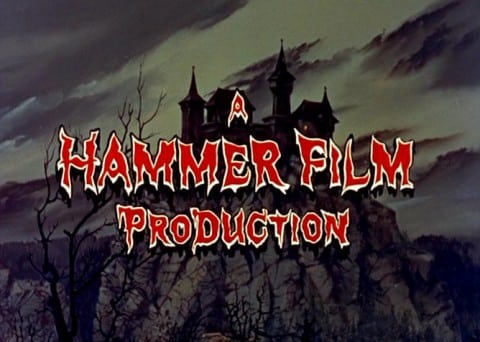
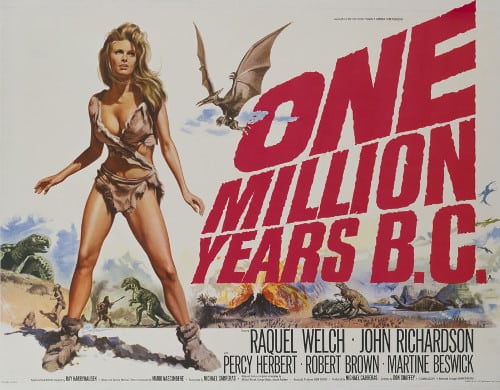

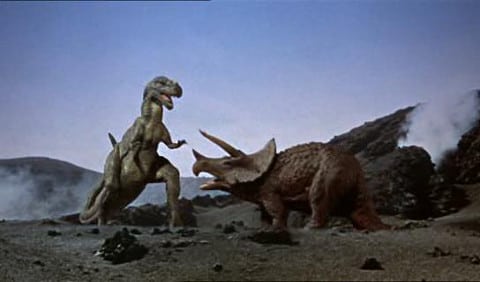




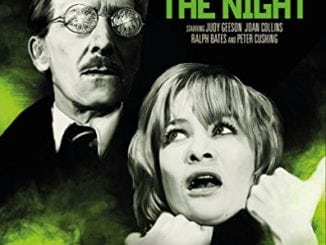
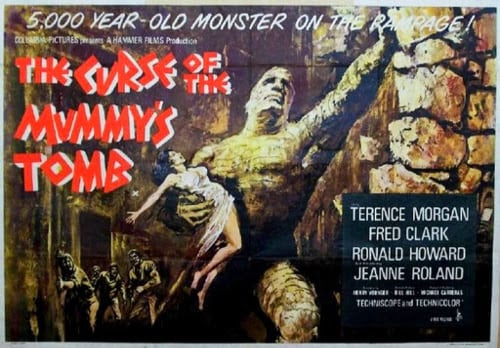
Be the first to comment